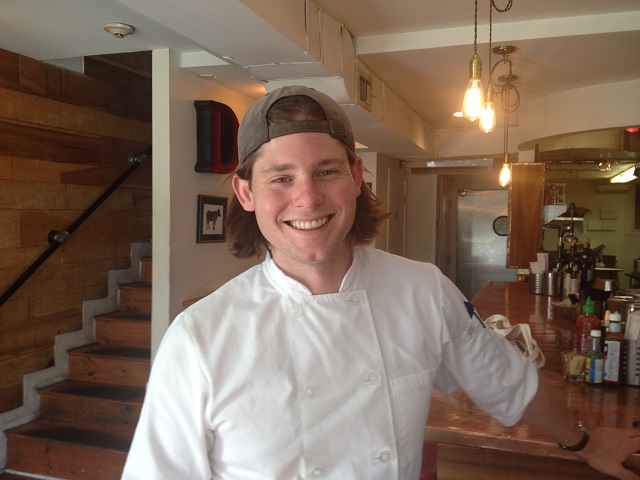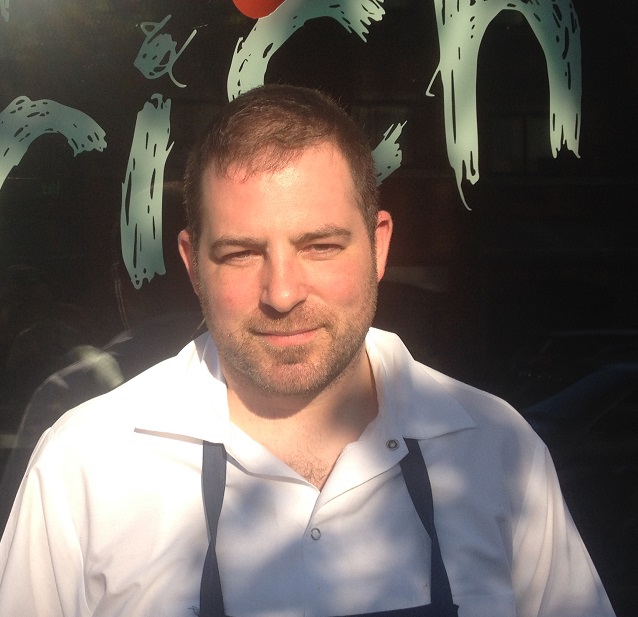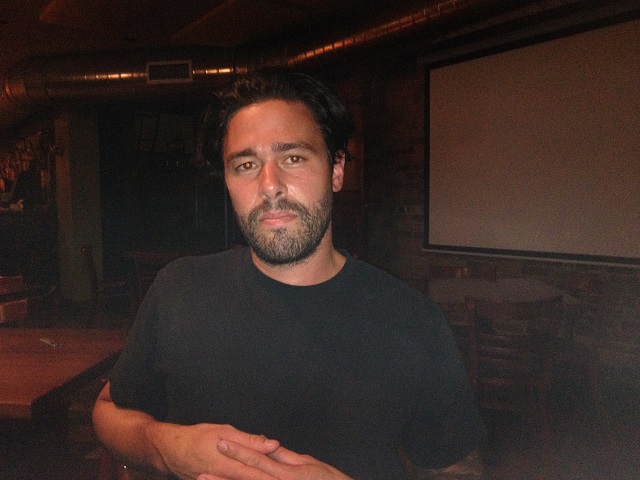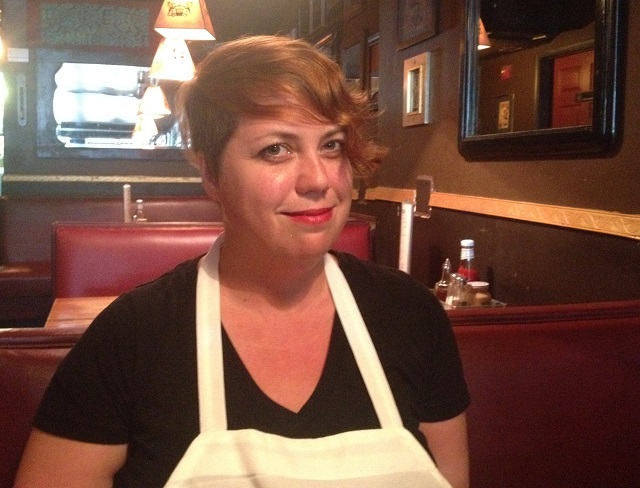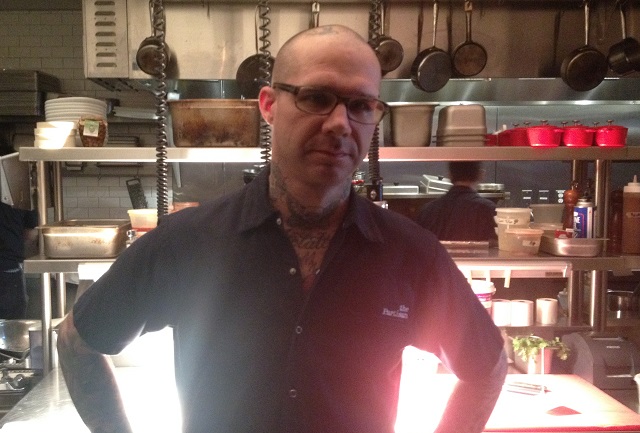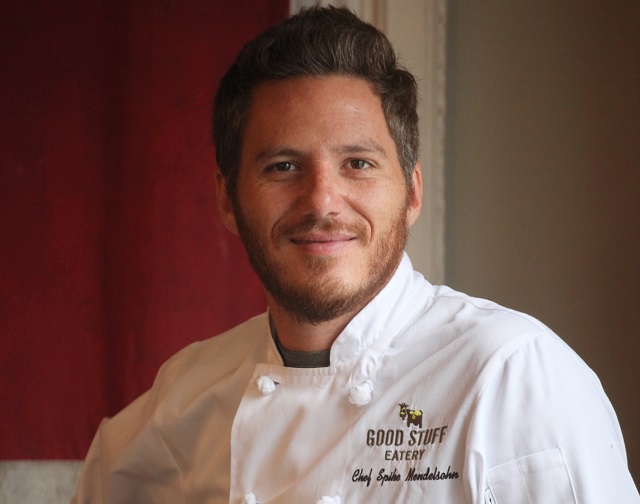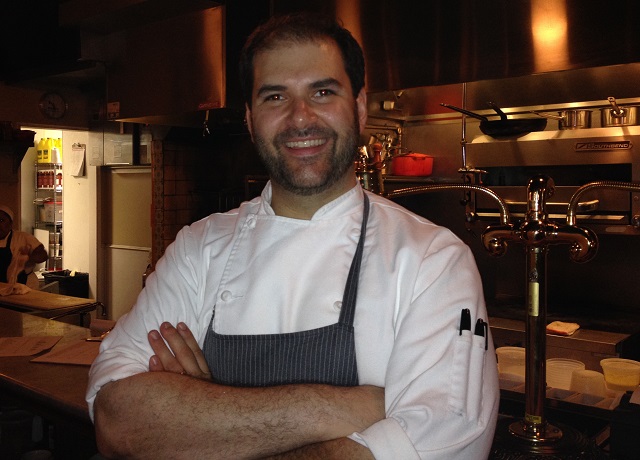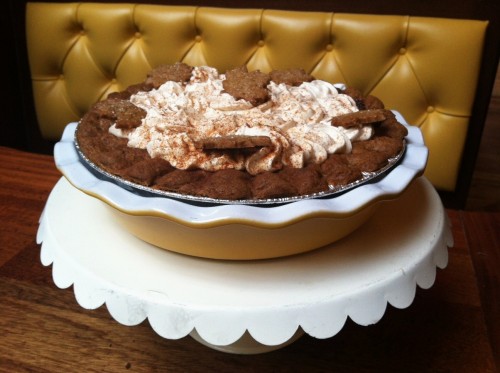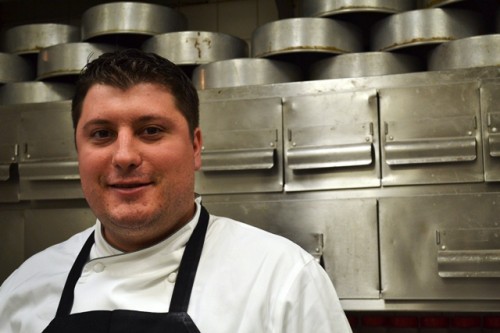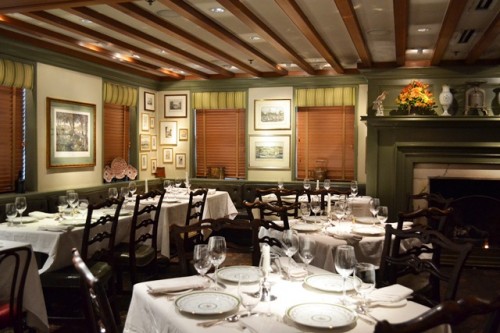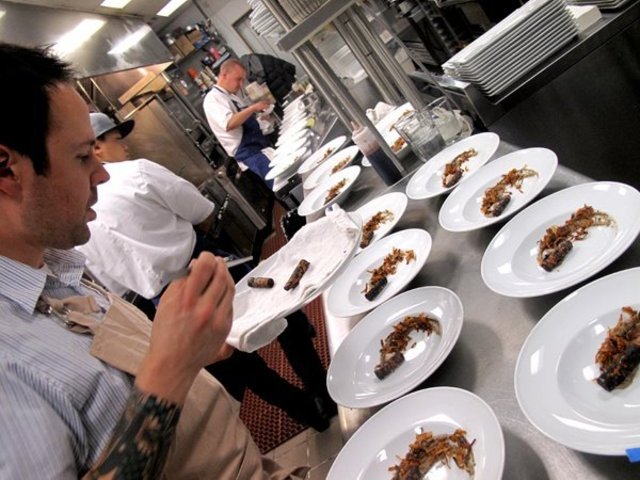
Aaron Silverman in the kitchen of Rose’s Luxury (Photo courtesy Rose’s Luxury)
We’re revisiting our Capital Chefs feature with a series by music reporter Mickey McCarter. A lot has been happening recently in kitchens in D.C. restaurants, and Mickey takes a look into them from his usual seat at the bar in this series, which runs occasionally on Thursdays.
Aaron Silverman credits his neighborhood, Barracks Row in Eastern Market (on Capitol Hill), with the success of his restaurant, Rose’s Luxury.
And a desire to stay connected to that neighborhood is one of the big motivators for why the chef/owner does not take reservations, despite some controversy surrounding the policy.
“We don’t like kicking people out of their seats to sit the next person down,” Silverman told me in a recent phone conversation, “but a big part of it is that it’s advantageous to the neighborhood. All of the people in the neighborhood are at an advantage because they don’t have to drive for an hour or fly to get to us and then find out that we are full. Their risk is much lower. They can just walk across the street.”
Whether a restaurant takes reservations or no, its customers still have to play a waiting game. With reservations, they are calling on the phone every day with hopes to get a seat—four, six or eight weeks out. With no reservations, diners have the opportunity to show up that very day, but they may have to wait in line.
“Anybody who wants to be at Rose’s today can eat there today—guaranteed. You may have to get in line early and you may have to wait, but you are guaranteed to eat dinner there today if you want to,” Silverman declared. “If we took reservations only, we would be booked and there would be no way. You couldn’t just go.”
The policy of no reservations is the “lesser evil” because people who have waited can enjoy their meals for as long as they like, Silverman said.
